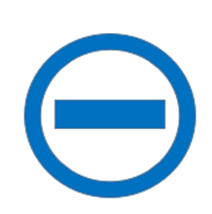If your blood test result is positive, it means you have TB germs in your body. A doctor or healthcare provider should examine you. Most people with positive TB tests feel just fine and have no signs of illness, because they have latent (or “hidden”) TB infection. Latent TB infection means that your body is able to keep you from feeling sick right now, but TB germs in your body could make you sick in the future. When you are sick from TB germs, it is called TB disease. When you have TB disease, your illness may spread to family members and other people around you.
The TB vaccine (or “BCG vaccine”) does not affect your blood test result: a positive blood test means you have TB germs in your body. Even if you have had the BCG vaccine, you can still have latent TB infection or TB disease and should be examined by a doctor or healthcare professional.
If you test positive do not worry: there is medication that can help you.
See “Next Step” to learn what to do next.

Negative (normal result)
If your blood test result is negative, it means you do not have TB germs in your body.
Talk to your doctor if you plan to travel to places where TB is common (this includes many countries in Asia, Africa, Latin American, Eastern Europe and Russia) or if you are around someone with TB disease.
Other Types of TB Tests
You may have had a different type of TB test, the TB skin test (also sometimes called the “PPD”). If so, talk to your doctor or healthcare provider about how to understand this test. If the skin test is positive, you may need to be examined by a doctor or healthcare provider.
Next Steps
A positive blood test could mean either latent TB infection or TB disease. Therefore, a doctor or healthcare provider should examine you. For help finding a doctor or healthcare provider, please contact your local health department (Local Health Services/Offices, https://www.cdph.ca.gov/pages/localhealthservicesandoffices.aspx) or a local Federally Qualified Health Center (Health Resources and Services Administration: Find a Health Center, https://findahealthcenter.hrsa.gov). See additional info in “Frequently Asked Questions” below.
Your doctor or healthcare provider may ask you how you are feeling and recommend that you get a chest x-ray to make sure you do not have TB disease. They may also suggest you take medication for latent TB infection. Take the medicine to protect yourself and your loved ones from getting sick in the future.
If you notice symptoms that could be TB disease (such as a cough that lasts more than 3 weeks, fever, or weight loss for no reason), speak to your doctor or healthcare provider as soon as possible, ideally within a few days. If you are very sick, you may need to visit an emergency room.
For more information, please see the CDC Diagnosing Latent TB Infection and Disease webpage.